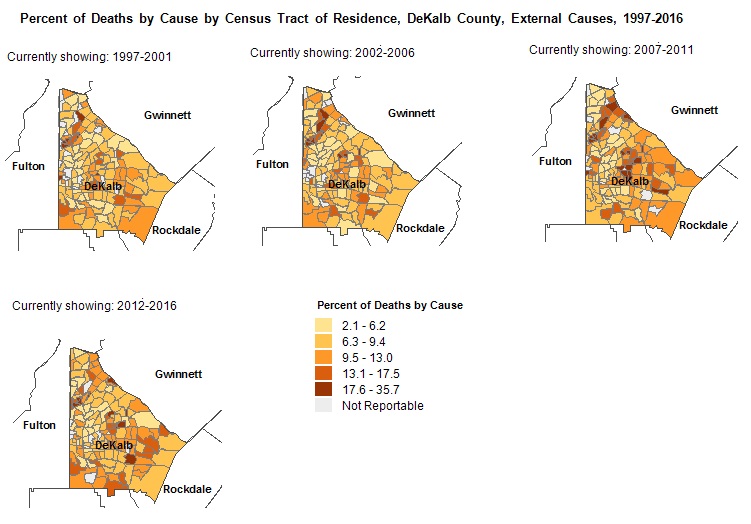|
Layman Term
|
ICD10 (ICD9) codes
|
International Classification of Diseases Term
|
Description
|
|
Fetal & Infant Conditions
|
P00.0 - P96.9 (760-771.2, 771.4-779)
|
Certain Conditions Originating in the Perinatal Period
|
Conditions to the fetus/child associated with the period of time near birth.
|
|
Prematurity
|
P07 (765)
|
Disorders related to short gestation and low birth weight, not elsewhere
classified
|
Disorders related to short gestation and low birth weight, not elsewhere
classified.
|
|
Lack of Oxygen to the Fetus
|
P20 - P21 (768)
|
Intrauterine hypoxia and birth asphyxia
|
Any condition during pregnancy or childbirth where the oxygen is cut off to the
fetus.
|
|
Respiratory Distress Syndrome
|
P22 (769)
|
Respiratory distress of newborn
|
Respiratory distress syndrome of the newborn, also called hyaline membrane
disease, is a lung disorder that primarily affects premature infants and causes
increasing difficulty in breathing.
|
|
Birth-related Infections
|
P35 - P39 (771.0-771.2, 771.4-771.8)
|
Infections specific to the perinatal period
|
Infections specific to the period of time near birth.
|
|
Birth Defects
|
Q00.0 - Q99.9 (740-759)
|
Congenital Malformations, Deformations and Chromosomal Abnormalities
|
A physiological or structural abnormality that develops at or before birth and
is present at birth, especially as a result of faulty development, infection,
heredity, or injury.
|
|
Neural Tube Defects
|
Q00-Q07 (740-742)
|
Congenital malformations of the nervous system
|
A defect occurring early in fetal development that damages the primitive tissue
which will become the brain and spinal cord.
|
|
SIDS
|
R95 (798.0)
|
SIDS
|
Sudden infant death syndrome (SIDS) is the unexpected, sudden death of any
infant or child under one year old in which an autopsy does not show an
explainable cause of death.
|
|
External Causes*
|
V01-Y97 (E800-E999)
|
External Causes of Morbidity
|
All causes that affect the human body that originate from an external source.
|
|
Motor Vehicle Crashes
|
V02-V04, V09.0, V09.2, V12-V14, V19.0-V19.2, V19.4-V19.6, V20-V79, V80.3-V80.5,
V81.0-V81.1, V82.0-V82.1, V83-V86, V87.0-V87.8, V88.0-V88.8, V89.0, V89.2
(E810-E825)
|
Motor vehicle accidents
|
Consists of all accidents in which any motorized vehicle (car, truck,
motorcycle, etc. ) was involved, including ones involving motor vehicles
injuring pedestrians or bicyclists.
|
|
Falls
|
W00-W19 (E880-E888)
|
Falls
|
All accidental injuries caused by an individual losing their balance.
|
|
Accidental Shooting
|
W32-W34 (E922)
|
Accidental discharge of firearms
|
Injury as a result of the accidental discharge of a firearm.
|
|
Drowning
|
W65-W74 (E910)
|
Accidental drowning and submersion
|
Drowning from being submerged in water or other fluid.
|
|
Fire & Smoke Exposure
|
X00-X09 (E890-E899)
|
Accidental exposure to smoke, fire and flames
|
Accidental exposure to smoke, fire and flames.
|
|
Poisoning
|
X40-X49 (E850-E869, E924.1)
|
Accidental poisoning and exposure to noxious substances
|
The act of ingesting or coming into contact with a harmful substance that may
cause, injury, illness, or death.
|
|
Suffocation
|
W75-W84 (E911-E913)
|
Suffocation
|
Suffocation from items in bed, inhalation of gastric contents, food, airtight
space, or plastic bag.
|
|
All Other Unintentional Injury
|
V01,V05-V08, V09.1, V09.3-V11, V15-V18, V19.3, V19.7-V19.9, V80.0-V80.2,
V80.6-V80.9, V81.2-V81.9, V82.2-V82.9, V87.9, V88.9, V89.1, V89.3-V99, W20-W31,
W35-W64, W85-99, X10-X39, X50-X59, Y85-Y86 (E800-E809, E826-E849, E900-E909,
E914-E921, E923-E924.0, E924.2-E929)
|
All Other Unintentional Injury
|
Add to motor vehicle crashes, falls, accidental shooting, drowning, fire & smoke
exposure, poisoning, and suffocation to obtain all unintentional injury.
|
|
Homicide
|
X85-Y09, Y87.1 (E960-E969)
|
Assault (homicide)
|
The killing of one person by another.
|


